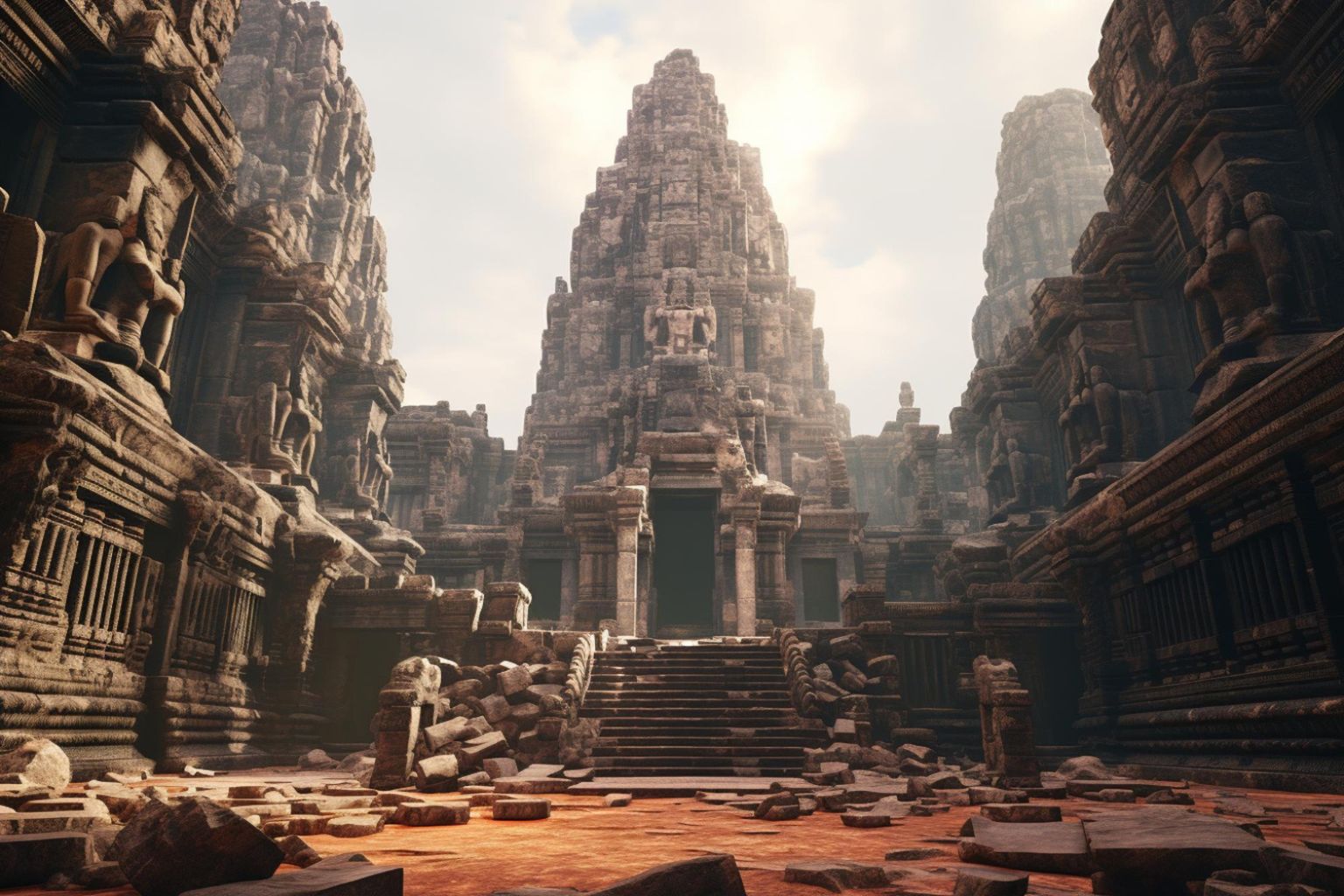Preserving Heritage: The Importance of Renovating Ancient Temples in Uttarakhand

The divine beauty and serenity of Uttarakhand have always been a point of tourist attraction. This holy trinity place consists of many small and renowned temples, some of which have been present since ancient times. Apart from cultural and religious aspirations associated with the temples in Uttarakhand, they are important for archaeological and historical purposes. This makes Uttarakhand one of the best places to look for temples on Earth. Each of the temples in Uttarakhand has its very own spiritual significance. Across this beautiful state, there are many ancient temples that tell the tales of ancient eras. But with time the changing impact of weather conditions has destroyed these architectural marvels. Temples are not just architectural structures; they have cultural values and most importantly spiritual beliefs. These temples carry the faith and tradition of millions of people in India. Therefore, it has become highly important to renovate ancient temples to preserve heritage. This article explores the importance of ancient temple renovation.
Why is there a need for Temple renovation?
Many temples and archaeological monuments across the Himalayan region of India are dealing with changing weather conditions. Due to climate change, many temples in Uttarakhand are facing challenges due to heavy rainfall, extreme heat and rising humidity. One of the most popular pilgrimage destinations of Uttarakhand- Kedarnath is dealing with heavy rainfall especially due to melting glacial snow. Kedarnath is home to one of the most famous Lord Shiva temples. Many people visit this place every year to take divine experience and blessings from Lord Shiva. Moreover, it is also included in Char Dham yatra, therefore it has more visitors than other sites. There are various other temples present in Kedarnath which are devoted to many Hindu gods. However, in the past few years, climate change has become a major threat to this place. Due to climate change global temperature of this region is continuously rising, and glaciers present near the Kedarnath region are melting at rapid rates. Therefore, there are very high chance of flood in this region which can destroy the ancient temples present in the area.
Apart from this, another important factor which is affecting the ancient temples is increasing air pollution. Although Kedarnath is filled with 60% forest cover and a mountainous region still due to urbanization and increasing tourism air pollution is forming a blanket of the state. Air pollution has increased so much that it is rapidly covering the northern part of India which is a major threat to many religious places. To protect ancient temples from such threats, many religious leaders and environmentalists have started campaigns to protect India’s heritage. Apart from this government is removing construction industries and stopping farmers from burning left-out crops in the field to reduce the amount of air pollutants.
How is the government protecting temples?
Temples play an important role in demonstrating our past. Temples have been there in India since the time of World War and many of them are even present since ancient times. Earlier they also were the place for keeping treasury by Kings. For a very long time, the government of India has been responsible for managing Temples rather than other public and private bodies. Whether it was Cholas or Pandyas big temples were always owned by the government. However, in the past few years, there have been many demands by the public to free these architectural marvels from the control and supervision of government. However, it is important to understand that these temples are best under the supervision of the government. The government is responsible for maintaining the temples. So, if any temple requires any renovation or restoration work then the government will be responsible for arranging funds. Fundraising for temple renovation is also done mostly by government bodies.
Moreover, the government of India has already established a Temple development Board which is an independent and statutory body which looks after the management and governance of temples. Many temples in Uttarakhand are being reconstructed to protect them for longer periods. This will help the future generation to witness ancient history. ASI conducted a study about Tungnath Temple, which is located in Rudraprayag near Garhwal Himalayas revealing that one of the Lord Shiva Temples has been tilting due to landslides for the past few years. This has raised various concerns as the temple has tilted up to 10°. Earlier it was leaning at an angle of 6°. The official members of ASI informed the government about the findings so that actions could be taken to protect Lord Shiva Temple. After that government of India had already started the process of redevelopment of this Temple. Although it is under the control of the government of India this temple is mainly managed by BKTC (Badri & Kedar Temple Committee). This committee is responsible for undertaking against tilting of the Temple and making developmental plans to protect the temple before it falls. Below are the major responsibilities of government established committee including the Temple development board:
- It ensures the complete security of all the temples across the state.
- Prepare Prasad under hygienic conditions.
- It is responsible for maintenance of complete restoration and Temple maintenance.
- Ensuring careful performance of prayers and rituals in the Temple
- Ensuring the safety of tourists and pilgrims coming to visit these holy sites.
- Arrangement of drinking water and road maintenance is also managed by the government.
How does Temple renovation help to preserve the heritage of Uttarakhand?
Temples have a very important aspect in Indian history. Temples are a storehouse of tradition and culture in India. They have unique architecture which reflects ancient traditions and some of them even contain aspects of history. Uttarakhand is the only state where people can easily find the best temples in the world. Every single region in Uttarakhand has some spiritual significance. Some of the most famous temples in Uttarakhand are Panch Kedar, Chota Char Dham, Shakti Peeth, Siddha Peeth and Panch Prayag. All these temples are covered by the mountain region of the great Himalayas which makes them look more Divine. Protecting these beautiful temples is the prime responsibility of every person. They hold a strong cultural and social heritage of India which is why it has become crucial to preserve temples by renovating them. Now let’s understand this in much more detail:
Protecting history: Temples are architectural museums their craftsmanship and architecture reflect a lot about the historical era. Some of the temples have even been present for centuries. Renovation is essential to prevent the destruction of these temples ensuring that their historical value remains intact and preserved for a longer time. Moreover, ancient temple renovation requires the establishment of committees and government authorities which are responsible for the restoration, documentation and preservation of ancient heritage of temples. It includes adopting strategies which help to promote traditional craftsmanship, leveraging new technology and architectural conservation.
Preserving traditional techniques: The traditional techniques used for the construction of these marvellous structures describe the valuable construction techniques used in ancient times to craft such beautiful temples. Renovation can help to preserve these craftsmanship skills.
Maintaining religious and spiritual significance: Temples are important in Hindu culture. They have been considered as place of spiritual solace and worship for Hindus for many decades, renovation helps to protect their pristine beauty and structural integrity.
Boosting tourism: Temples have both historical value and cultural significance. They have their pristine beauty which attracts tourists from around the world. Increasing tourism not only benefits the temples but also helps to increase the economy of the state. With increasing domestic travel in the state of Uttarakhand the government anticipates an inflow of tourists in the state up to 74 million in the year 2024 which was earlier 40 million in 2018 and 2019. Uttarakhand government also aims to attract funding for tourism. Currently, tourism contributes towards 4.4% of the GDP of the state which makes up about Rs. 14,000 crores. In the next five years, the government is expecting a growth of 12 to 15% in tourism.
Things to keep in mind
Ancient Temple Renovation is a very important and delicate process which requires maintaining the balance between incorporating modern facilities and preserving the historical importance of the temple to provide comfort to tourists or visitors. There are a few things to keep in mind while renovating old temples:
Careful introduction of modern facilities: Introducing modern amenities into temples should be subtly done so that it does not interfere with the sanctity of the Temple.
Preserving architectural features: Carvings, Murals and other essential elements of the temple should be maintained and reduced carefully.
Use of traditional materials: Maintaining local craftsmanship is crucial while renovating as it is a place of worship and spirituality, some people don’t accept changes in their place of worship.
Summing up
Restoration of ancient temples is important for preserving cultural heritage. By carefully performing ancient temples renovation the cultural heritage of this place can thrive for many centuries. Temples not only reflect history, but it also serves as a source of inspiration for people and their devotion towards God. Many temples of Uttarakhand are mostly getting damaged and destroyed due to rapid changes in climate conditions and patterns which should be addressed by authorities to preserve these spiritual structures.
